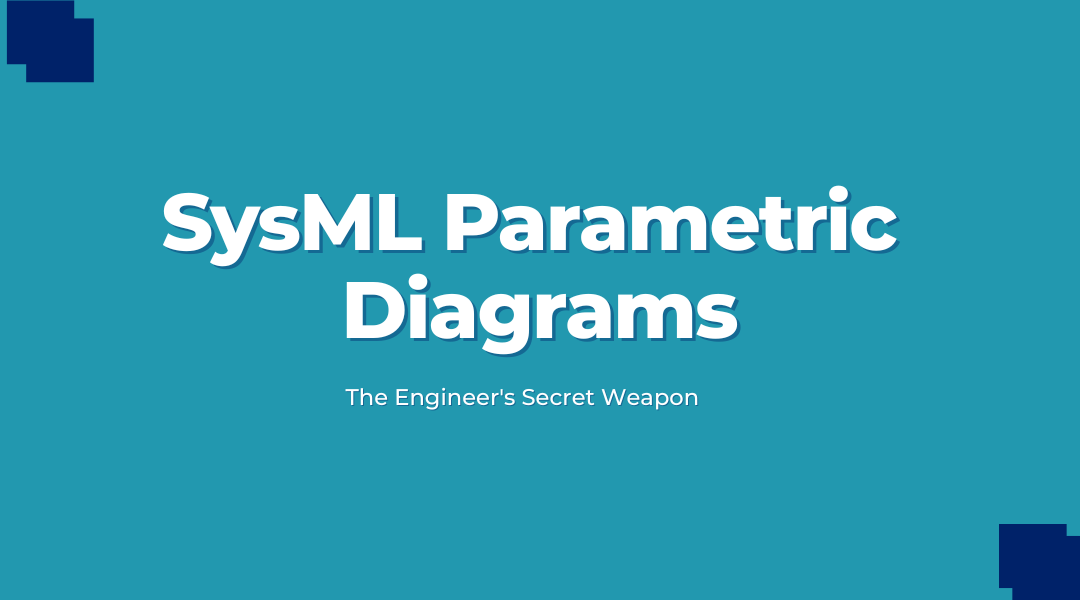Picture this: You’re designing an electric vehicle battery pack. Marketing wants 500 miles per charge. Mechanical insists on keeping weight under 1,500 lbs. Thermal needs to maintain cells below 45°C. How do you balance these competing demands without building 50 prototypes? Enter SysML parametric diagrams—the unsung hero of systems engineering.
What Parametric Diagrams Actually Do
Unlike flowcharts or structural diagrams, parametric diagrams model quantitative relationships—the hard math governing real-world systems. They answer questions like:
- If we reduce material thickness by 2mm, how much does that impact heat dissipation?
- What’s the exact tradeoff between sensor accuracy and power consumption?
Real-world analogy: It’s like an Excel spreadsheet that visually connects to your CAD models and requirements. Change one variable, and you instantly see ripple effects across the system.
Core Building Blocks (Without the Jargon)
1. Constraint Blocks
These are your reusable “formula templates.”
Example: A Battery_Cooling block might contain:
- Max_Temp = (Heat_Generated × Insulation_Thickness) / Cooling_Fan_CFM
2. Parameters
The actual numbers you plug into formulas:
- Heat_Generated: 450W
- Cooling_Fan_CFM: 120
3. Binding Connectors
Wires that link real system components to equations:
- [Battery_Cell_Assembly.Temperature] ←binds→ [Max_Temp]
Where These Diagrams Shine
1. Automotive: The Weight-Power-Acceleration Triangle
Tesla engineers use parametric models to balance:
- Requirement: 0-60 mph in 3.1s
- Constraint: Motor torque ≥ (Vehicle mass × Acceleration) / Wheel radius
- Tradeoff: Every 100 lbs added requires either:
- 12% more battery (cost ↑)
- 8% reduced range (marketing ↓)
2. Aerospace: Fuel vs. Payload Calculations
Boeing’s 787 team modeled:
- Equation:
Max_Range = (Fuel_Capacity × Engine_Efficiency) / (Empty_Weight + Payload)
- Discovery: Carbon fiber wings allowed 17% more payload without range penalty.
3. Medical Devices: Drug Delivery Precision
An insulin pump might constrain:
- Flow rate error < ±2% of prescribed dose
- Dependent on:
- Pump motor resolution
- Tube diameter tolerance
- Sensor sampling frequency
Why This Beats Spreadsheets
- Live Connections
Change a parameter in your CAD model? The diagram auto-updates all linked calculations. - Visual Debugging
Spot unbalanced equations instantly—like seeing which term dominates a thermal model. - Requirements Traceability
Link directly to SysML requirements:
[Req: “Battery <50°C”] ←verified by→ [Constraint: Max_Temp ≤50]
Creating an Effective Parametric Model
Step 1: Identify the Knobs
List adjustable parameters (e.g., material thickness, sensor frequency).
Step 2: Define the Rules
Encode physics/financial formulas as constraint blocks.
Step 3: Connect the Dots
Bind actual component properties to equation variables.
Pro Tip: Start simple. A jet engine model might begin with just thrust = mass flow × exhaust velocity before adding complexities like turbine efficiency.
Common Pitfalls (And How to Avoid Them)
- “Everything is Connected” Syndrome
- Bad: Modeling all 200 parameters at once.
- Smart: Focus on 3-5 key relationships first.
- Ignoring Uncertainty
Always include tolerance ranges:
Safe_Load = (Material_Strength / 1.5) ± 10%
- Forgetting Units
Parametric tools won’t catch unit mismatches (looking at you, Mars Climate Orbiter).
When to Reach for Parametric Modeling
- You’re making performance tradeoffs (speed vs. battery life)
- Regulatory compliance requires proof (safety factors)
- Your system has feedback loops (thermal management, control systems)
Final Thought
Parametric diagrams transform engineering from art to science. They’re not just pretty pictures—they’re executable math that prevents “Oops, we didn’t account for that” moments.
